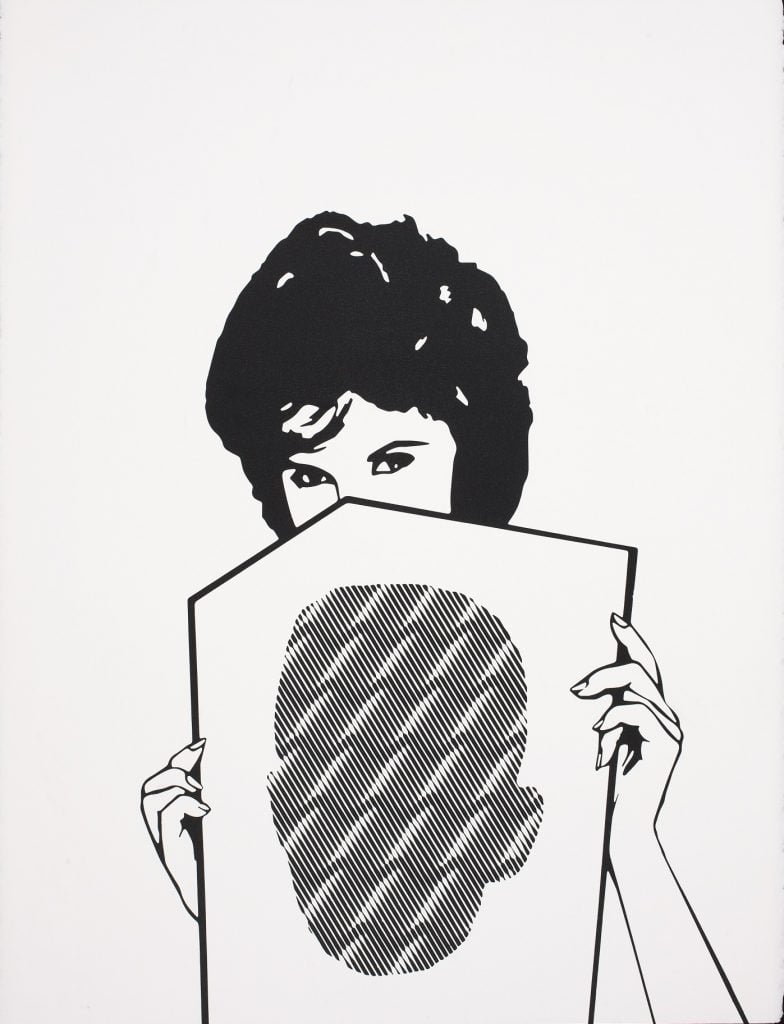One New Work curator Nancy Tousley has described the ongoing exhibition series as “a laboratory in which a curator and an artist working together can expand the conventional models of museum presentation…” It’s hard to think of another artist more suited to this process than veteran Calgary artist Chris Cran, a perpetual experimenter and explorer whose 35-plus year career has seen him traverse high and low culture, realism and abstraction, perception and reality.
Fittingly titled At Play, Cran’s contribution to One New Work finds the artist continuing to find joy in discovering the untapped possibilities within his practice, which he was kind enough to discuss with us .
Let’s start at the beginning of this project. Curator Nancy Tousley approaches you and says she’d like you to take part in the One New Work series, and your reaction is…
I say, ‘okay!’ Starting out I didn’t know what I was going to do – it’s all going to be new. I tend to go in that direction, to change lanes from time to time, and this was a great opportunity to do that.
In what way did you change lanes?
All throughout my career I’ve done, you know, realism, abstraction, etc.… Whenever I finish with something I want to do something new. [At Play] is work on paper, black paint on paper, and it was a matter of discovery, which is always the pleasure for me. I’ve got certain tools I work with and I’m constantly trying to figure out what I can do with them.
Touching on the exhibition title, how do you differentiate between play and work? Or is it all play?
I prefer to look at it all as play because guess what? Work is a chore. I mean, I made paintings back in the 80s that took 2 to 5 months to do. That was certainly a lot of work, but then I changed and I found that I made paintings that had to be finished in a day. So once you get the sense of the possibilities, you go with that.
So you’re on this process of discovery – was there a moment where your concept and direction became clear?
No concept. No direction. Not in that way. I had already made the smaller works, and then in late spring of 2018 I started making the newer, bigger ones. I had an idea and did one, then another, and I just kept it rolling. I was sampling from popular culture – I find all sorts of images in pop culture that I can translate, transform or do whatever I want with them.

What attracted you to that kind of material?
I would say that my visual sensibility was formed by growing up in the 50s. Advertisements in the ‘50s were so spectacular graphically. So I got a real hit of this pop thing and it’s just instilled somehow.
There are some other recurrences in your work, such as distortion.
Part of that, the distortion, is that I have a machine that I cut stencils with. I have new tools. I used to do stuff with paint brushes and a refined realism, but in a newer age there’s computers and Photoshop and Illustrator, and I’ve got this stencil cutter. The stuff that I used to photograph and then project and paint by hand, now I can do with this whole system. I’ve got the system, and my question is, ‘what can I do with it?’ So what you’re seeing in [At Play] may lead to larger paintings, but I’m always discovering new possibilities with this technology, and that’s the fun part. I always talk about it like its wandering up a creek – you notice something and you go, ‘wow, what’s that?’ Then you notice something else that comes off of that, and you just keep on finding things. You just have to be alert to what’s there and what the possibilities might be.
The one characteristic repeatedly used to describe your work, regardless of the source, is humour. Is that just something inherent within you? And how do you think it serves your work?
I think so. My parents were humourous. I think it’s a kind of way of enjoying life. The thing about humour, for me, is that it’s usually saying one thing and meaning another: a kind of interplay takes place. Once I heard somebody say that the mind cannot entertain two things at the same time. So, what I realized early on is that if you present the viewer with two things then they travel between the two – and there’s all sort of different “twos” that could be. For instance, in my early stripe paintings, there’s images with the appearance of stripes over them, so the viewer is looking at this and looking at that, and, when the viewer travels, they’re being held by themselves – by their own interest and fascination. Humour is another aspect of that, I think.
Chris Cran: At Play runs February 9 to May 26, 2019 at Glenbow. Join Chris for a special Salon Series evening on February 28. Tickets on sale on now!
Top image: Chris Cran, Nose, 2018, Courtesy of the Artist
